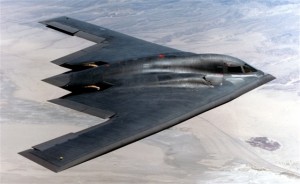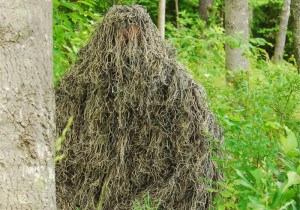How Stealth Technology Works
From the B-2 to Batman, the look and feel of modern warfare has been visibly changed by stealth technology!
Stealth technology refers to a range of different industries in pursuit of one goal: that of making objects less visible. For hundreds of years, visible referred to the purely optical. However, after WWII proved radar’s effectiveness at detecting faster-moving assaults, it was clear something had to be done about it. At a stroke, stealth came to include all forms of visibility, from sonic to infrared and of course radar.
Radar cross section (RCS) is a measurement of how detectable an object is to radar: the higher the RCS, the more visible it is. RCS can be reduced in many ways, from designing less prominent shapes to inventing less pervious materials or simply coating the object in reflective paint.
Altering the shape of a craft to minimise RCS involves examining every single part of it – from the wings and tail that protrude the furthest, to every bump on its surface or accessory that might generate a radar signature. The first aircraft to benefit from this approach was the U-2 spy plane, which proved highly effective at evading Soviet detection during the early Cold War. A string of stealth aircraft followed, from the Lockheed Martin F-117 to today’s fourth-generation jet fighters like the F-22 Raptor.
However, RCS – for all its merits – is only a measurement of static visibility. As a craft moves, it constantly displays different angles and surfaces. For this reason, shape shifting is not the only focus of stealth technology.
 Radar-absorbing materials (RAM) can be added to an existing object to make it less visible. Compared to the vast costs of engineering new shapes or materials, RAMs can make a significant difference for relatively little money, which is why all stealth vehicles now make use of them.
Radar-absorbing materials (RAM) can be added to an existing object to make it less visible. Compared to the vast costs of engineering new shapes or materials, RAMs can make a significant difference for relatively little money, which is why all stealth vehicles now make use of them.
The cheapest and most widely available RAM is iron ball paint, a coating of tiny iron or ferrite-coated spheres that converts radar energy into heat that can be naturally dissipated by the object being concealed. After coverings, there are linings such as foam absorbers, which are used to line any enclosure that needs to be insulated from electromagnetic radiation. Made from layers of carbon-injected foam, absorbers can be cut to virtually any thickness or size, making them cost effective, but not particularly portable.
Finally, there are custom-built casings and coverings such as Salisbury screens – a three-level design consisting of a metallic ground plane, a precisely engineered electrical insulator and a thin, glossy screen. Salisbury screens and their bigger offspring Jaumann absorbers work by splitting the radar wave into parts, which are then either diffused or cancelled out by other reflections of the original wave. Such customized casings are highly technical, expensive and inflexible in the field – one reason why this level of stealth protection is beyond the means of all but the most valuable of consignments.
How not to be seen?
Before stealth there was camouflage -but only just.
Camouflage was a relatively recent addition to human conflict, developed as late as the Boer War (1899-1902). The need for soldiers to remain unseen resulted in a variety of materials, colourings and styles being developed to help them blend into various terrains, the most famous being the ‘ghillie suit’ (modelled on the right). As snipers came to be used as spotters for artillery or laser-guided strikes, most recently in the Gulf Wars, the camouflage upon which they rely is more important today than ever before.
Ghillie suits
 Ghillie suits are usually khaki or grey but they can be coloured to match any terrain: jungle, desert or arctic conditions. Ghillie suits are worn by snipers and their spotters to avoid detection while moving, stationary and lining up the shot. Camouflage relies on colour and texture. It may feature mud, twigs or leaves from terrain that the sniper customizes himself. When not hand-made by the sniper, ghillie suits come in several pieces, which are glued or stitched to a standard uniform.
Ghillie suits are usually khaki or grey but they can be coloured to match any terrain: jungle, desert or arctic conditions. Ghillie suits are worn by snipers and their spotters to avoid detection while moving, stationary and lining up the shot. Camouflage relies on colour and texture. It may feature mud, twigs or leaves from terrain that the sniper customizes himself. When not hand-made by the sniper, ghillie suits come in several pieces, which are glued or stitched to a standard uniform.
Active camouflage
Some animals can change their colour, so why can’t we?
Active camouflage works by mimicking the background terrain, not approximately (as a ghillie suit would) but precisely, including changes that occur to the background itself – for instance, day becoming night. There are many ways of approaching this, most have relied on the way the object is lit or the way it reflects light back. Recent advances in organic light emitting diodes (OLEDs) promise to allow virtually any image to be projected onto virtually any surface. This would revolutionize active camouflage, but we are at least several years from a functioning adaptive ‘stealth suit’.
